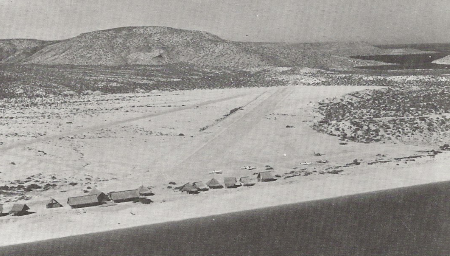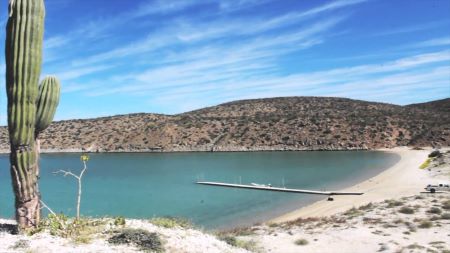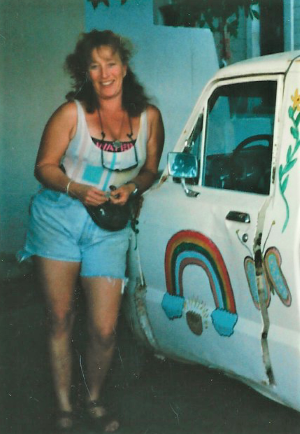 |  |
This article was written in 1989. San Francisquito is still a largely undeveloped remote Baja destination in 2021!
By Greg Niemann

The coarse white sandy beach, sparkling clear water, quiet balmy days and rustic cabins have made San Francisquito a real Sea of Cortez hideaway. Located about the middle of the Baja California peninsula (near the 28th parallel which separates the two Mexican states), private plane people have known about it for years.
Its isolated tranquility has made it a special fly-in destination but hard to get to overland. The small, paved landing strip that ends right at the cabins has been a favorite stopping place for Baja plane enthusiasts.
Hundreds of miles from the nearest disco, Punta San Francisquito offers peace, quiet, relaxation, serene beauty, a gorgeous beach, swimming, snorkeling, and some of the hottest fishing in Baja.
Fishing is hot
Located in the heart of the Sea of Cortez’s famous midriff region (where the narrow sea forces an upwelling of the waters providing nutrients to spawn the fishery), I learned the waters teem with fish.
In March, April and May, white sea bass may be caught in the area, while July, August and September are good months for sierra and yellowtail. Dorado often make a summertime appearance.
On an August 1989 visit my friend Ken and I caught cabrilla, bass, triggerfish, scorpionfish, bullseye puffers, sting rays and a needlefish, all from the surf in front of the cabins.
The hottest fishing is yellowtail: from May to October they are so dense you can sit on your cabin porch and watch them boiling in different locations around the bay. They often come very close to shore chasing baitfish, sometimes close enough to catch with a heavy lure, other times just a short, agonizing, distance beyond the lures. We missed hooking any from shore, but one guy staying down the beach caught two in a few minutes that morning.
Punta San Francisquito was established by Rodolfo (Rudy) Valladolid, now deceased. His son, Genero Valladolid of Tijuana, continues to run the place, but is only in residence two weeks each month. The other two weeks the small resort is managed by Pepe and Fina Torres, who drive down with their three children every 15 days.
There is a small bar (named Don Quijote), a dining room with picnic tables, a small storage building (for plane folk) and 11 cabins. The cabins, or palapas, are hewn of stone up to about three feet and are virtually open above that. Canvas doors and windows can be secured in the event of inclement weather, or for privacy. The roofs are tin, covered with palm thatch. The porch becomes the social area. Beds are cots covered with a mattress, two to four cots per cabin. Bathroom and shower facilities are in two separate cabins.
Rates are $30 per night for two people, and $40 for three or more. There is a $5 charge for camping (all prices are for 1989). The place is run on the honor system, no key, no cash exchanged until you leave. If you want a beer or a soda you grab it from the bar and stroke tally your room number on the clipboard.

Meals are served, but no menu. You let Pepe know you want dinner for two and at what time. We found the food delicious with the white meat from the manta ray served mojo de ajo (in garlic sauce) one night, and the darker meat of the manta ray served the next night.
A beautiful cove called “The Port”
About a mile from the resort (up the runway and over a small hill) is a bay with a beautiful natural cove (caleta) and a very small fishing village called The Port. The locals were preoccupied with commercial shark fishing out in the gulf (sharks don’t enter the shallow cove) when we were there.
Two Americans live in the smattering of buildings, one a middle-aged man named Eduardo, and down at the other end of the cove on the hill is Deborah Lucero. She’s a former New Yorker married to the head of the fishing co-op, Alberto Lucero. Alberto will sometimes take sportsmen out fishing.
While Deborah’s young children often swim freely in the large caleta, she might be busy hand painting San Francisquito t-shirts to sell to an occasional tourist.
Another of Deborah’s specialties is gourmet cuisine, an anomaly in this outpost so far from civilization. Guests let her know the day before that they wish to dine, and the Mexican resourcefulness that Deborah gleaned from 13 years in Baja pays off in a splendid candlelight dinner in a cluttered backyard overlooking the cove. Deborah and Alberto also provide camping nearby.
In recent years, Deborah has been active with her Citizens Band radio and has helped many an off-roader who has become stranded. She has also written several articles about her Baja experiences.
While I was there she was fretting over an upcoming problem that is compounded by Deborah’s chosen lifestyle. Her mother was coming from New York to visit!
“Has she ever been to Baja before?” I queried.
“No.”
“Anywhere in Mexico?”
“She’s never been out of New York.”
“You got a problem,” I concluded, knowing that many New Yorkers consider anything west of the Hudson River to be uncivilized wilderness. Even California, which they like to call “the coast,'' is considered a cultural wasteland by many of them.

Deborah herself escaped the urban life where industry and image are more important than values and friendship. She’s now in an incredibly remote area: her mail even goes to San Ignacio (about 75 miles of dirt road and another 70 miles of paved road away). She has none of the conveniences coveted by the modern American household.
And she had to entertain her mother who was coming from America’s largest city.
I found out later through the Baja grapevine that the visit went okay, but it was a lot briefer than planned. I would have loved to have been there just to see the reaction of someone who is used to seeing a deli on every corner!
Hard to get to
Not only is San Francisquito a remote outpost, it is very hard to get to without a private plane. The best road is through Bahia de los Angeles where the pavement ends some 400 miles south of Tijuana. The 85-mile dirt road south from the Bahia has been graded and now takes about three hours. It is so rocky, most locals drive dirt tracks off to the side. It can, however, be driven in a passenger car, and small boats can be towed if care is taken.
The other road, from the old mining town of El Arco, is worse. El Arco itself can be reached off of Highway 1, south of Guerrero Negro. The town is about 25 miles from the highway and while some maps show that road to be paved, the pavement has worn off years ago and is so rutted most people drive the dirt road alongside it.
It’s not too bad to get to El Arco, but the 50 miles of dirt road northeast from there to San Francisquito takes about three hours and is recommended only for high clearance vehicles. There is a high crown most of the way, and there is one spot called La Cuesta de la Ley (The slope that rules) that will tax the skills of most drivers and their vehicles. It is a vertical rocky drop of 400 feet in only .40 of a mile that the Automobile Club once called a “harrowing plunge.” My van actually skidded down it.
That’s the way it is in Baja – some of the most attractive places are the most inaccessible.
From our cabin porch we watched spectacular magenta and apricot sunrises explode from across the gulf. We watched pelicans patrolling the lucid turquoise waters, and fish boiling right off the sand. Then before evening darkness sets in, the whole bay takes on a warm orange glow.
There’s no disco; there’s not even a store, nor a television, nor a gift shop. There’s certainly no deli. There’re hardly any people. San Francisquito is not for everybody – but to a long-time Baja buff, it epitomizes what the whole peninsula used to be like.

2021 Update: After our 1989 visit several of the cabins were torn down And for years there were only four cabins.
The Punta San Francisquito resort languished in a rough state of disrepair until Javier and Chary Tiznado began running the place in the early 1990's. They lasted 14 years before moving on. Rudy's son Genero Valladolid returned to oversee the resort until 2006 when he passed away. In 2008 the resort was sold but few improvements were made.
According to July 2021 reports, there is only one usable cabin at Punta San Francisquito and junk cars about. They were closed for almost a year and are just getting started. I was surprised to learn Alberto “Beto” Lucero (Pesca Deportiva) still offers accommodation (a couple houses and camping) and sports fishing from the Puerto San Francisquito. (The Port).
For pilots, it was reported in July 2021 that the dirt runway is open with numbers marked at both ends. However, only two planes landed there in two recent months. The old paved runway is broken up and not usable.
The road from El Arco was graded and now, still slow, is the better way to get there.
In May 1999 I ran into Deborah Wayne Lucero in San Ignacio and we had a fun serendipitous reunion. Sadly, in October 2000 she died in a Flying Doctors plane crash near Ensenada while on a humanitarian mission in which she translated and set up doctors’ visits. Her Amateur Radio number KC6UEJ which helped so many people in Baja was sadly silenced. I dedicated my book Baja Legends to her and pioneers like her.
About Greg
Greg Niemann, a long-time Baja writer, is the author of Baja Fever, Baja Legends, Palm Springs Legends, Las Vegas Legends, and Big Brown: The Untold Story of UPS. Visit www.gregniemann.com.